Understanding Resistor Wattage: Choosing the Right Power for Your Circuits
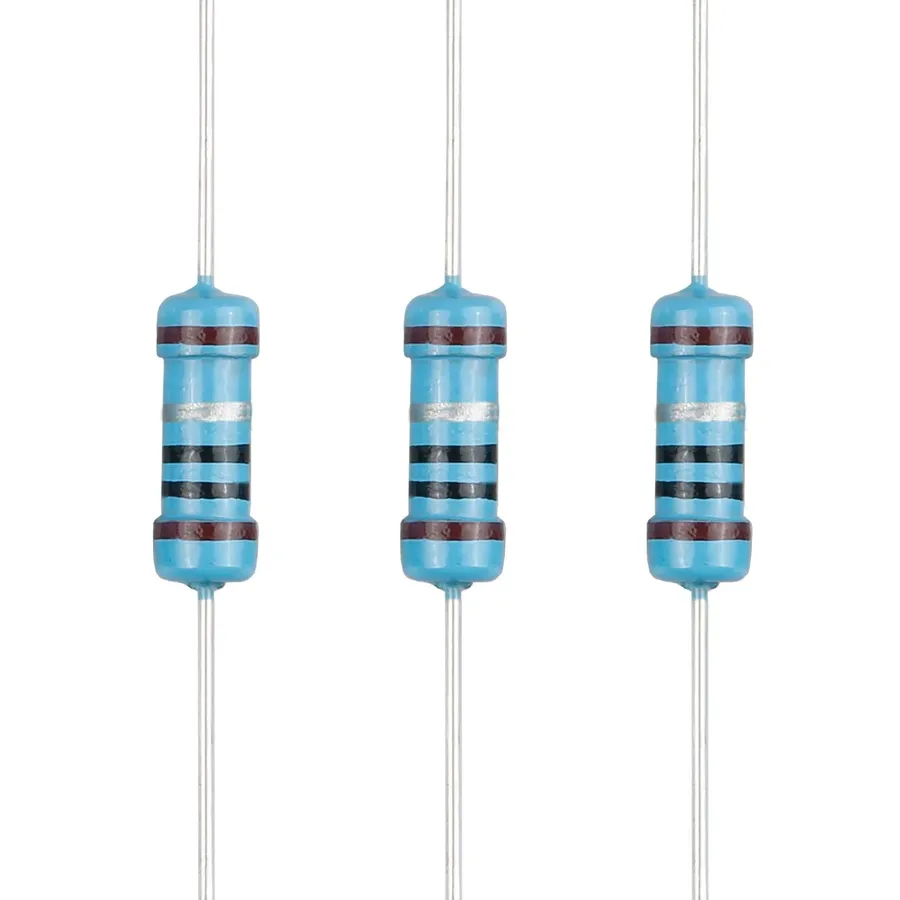
In the world of electronics, resistors are essential components that control the flow of electricity. But like any other electrical element, resistors have their limits, especially when it comes to handling power. Choosing the right wattage, or power rating, for a resistor is as crucial as picking the correct resistance value. A resistor with insufficient wattage will overheat and fail, potentially damaging other components. This guide simplifies the concept of resistor wattage and provides you with clear steps to selecting the appropriate power rating for your applications, from basic DIY projects to sophisticated circuit design. Think of it like choosing the right size pipe for water - too small, and it bursts; too big and it's unnecessary.
What is Resistor Wattage?

Resistor wattage defines the maximum power, measured in watts (W), that a resistor can safely dissipate as heat without undergoing damage. This parameter is crucial for determining the electrical load capacity of the component, and proper consideration is vital for preventing resistor burnout and ensuring both the longevity and safety of an electrical circuit.
Why Resistor Wattage Matters?

Resistor wattage is paramount in circuit design because it dictates the maximum power a resistor can dissipate as heat without failing. An improperly chosen wattage rating can lead to component failure, compromised circuit performance, and potential safety hazards. Selecting the correct wattage is as vital as selecting the correct resistance value.
The consequences of using an undersized resistor are substantial. Excessive heat generation from power dissipation can lead to a range of issues such as changes in resistance value, thus altering circuit behavior, premature failure due to thermal stress, and in severe cases, damage to adjacent components and the PCB itself. Therefore, selecting the correct wattage rating is not merely an optimization but a fundamental safety consideration.
- Consequences of Insufficient Wattage
Insufficient wattage leads to overheating. This can cause a change in the resistor's value, ultimately compromising the functionality of the circuit. Moreover, the resistor may fail catastrophically. This failure can be due to thermal stress or physical damage to the component. - Impact on Circuit Performance
When a resistor overheats, its resistance may drift from its rated value due to temperature coefficient of resistance. This can cause the circuit to behave unexpectedly, introducing errors or malfunctions. - Safety Hazards
Overheating components can pose a safety risk, especially in high-power circuits. A failing resistor may emit smoke, produce a fire hazard, or cause collateral damage to other parts of the system. - Component Longevity
Choosing the correct wattage extends the lifespan of the resistor and, by extension, the entire circuit. Properly rated components operate within their safe operating area, ensuring long-term reliability and performance.
Common Resistor Wattage Ratings
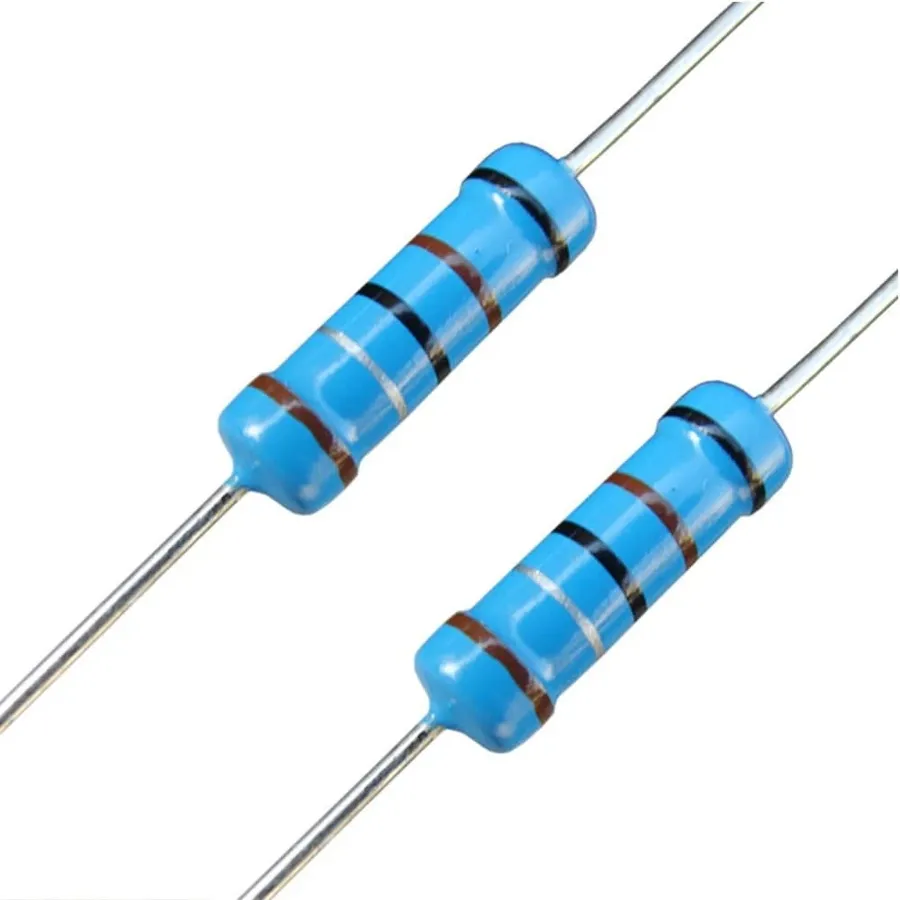
Resistors are manufactured with a variety of power handling capacities, quantified by their wattage rating. These ratings typically range from fractional values for low-power circuits to several watts for higher-power applications, and understanding these ratings is crucial for ensuring circuit stability and longevity. The physical size of a resistor often correlates with its wattage, though exceptions exist, especially with modern surface mount devices.
| Wattage Rating (W) | Typical Applications | Common Resistor Sizes | Physical Size (approximate) |
|---|---|---|---|
| 1/8 (0.125) | Low-power signal circuits, logic circuits | 0201, 0402, 0603 SMD | Very Small |
| 1/4 (0.25) | General purpose signal circuits, small LED drivers | 0603, 0805, 1206 SMD, axial leaded | Small |
| 1/2 (0.5) | Slightly higher current signal circuits, small motor control | 1206, 1210 SMD, axial leaded | Medium |
| 1 | Low to mid-power circuits, power supply regulation | 2010 SMD, axial leaded | Medium to Large |
| 2 | Mid-power motor control, linear regulator circuits | Axial leaded, through-hole | Large |
| 5 | Power conversion, high-current circuits | Axial leaded, through-hole | Large |
| 10+ | High power applications, power resistors | Through-hole, heatsink mount | Very Large |
Calculating Resistor Wattage Needs
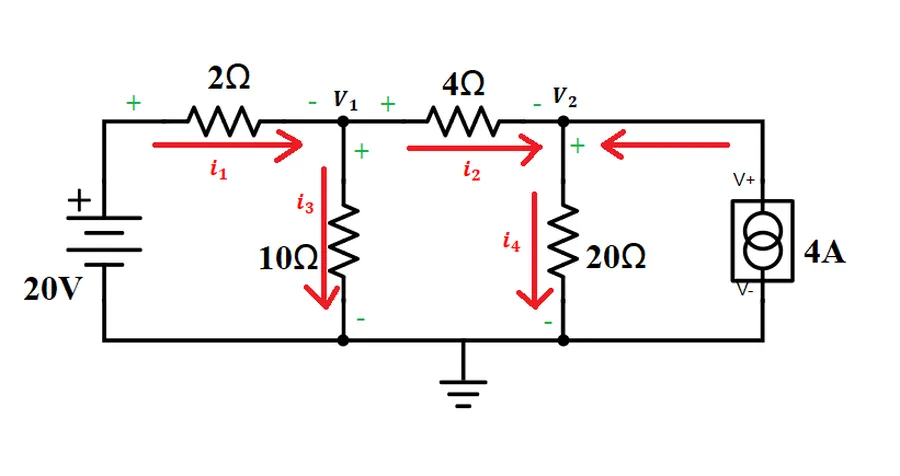
Accurately determining the required resistor wattage is paramount for circuit reliability and safety. This calculation is based on the power the resistor will dissipate as heat, derived from Ohm's Law and the power formula. To perform this calculation, the current flowing through the resistor, the voltage across it, and the resistance value must be considered. It is crucial to use the maximum expected values of these parameters to ensure the selected resistor can handle the worst-case scenario without overheating or failing.
| Parameter | Symbol | Formula | Description |
|---|---|---|---|
| Power | P | P = I²R | Power dissipated by the resistor (watts), calculated using current and resistance. |
| Power | P | P = V²/R | Power dissipated by the resistor (watts), calculated using voltage and resistance. |
| Current | I | I = V / R | Current flowing through the resistor (Amps). |
| Voltage | V | V = IR | Voltage across the resistor (Volts). |
| Resistance | R | R = V / I | Resistance value of the resistor (Ohms). |
Where: * P is the power dissipated in watts (W). * I is the current flowing through the resistor in amperes (A). * V is the voltage across the resistor in volts (V). * R is the resistance value in ohms (Ω).
When calculating the power dissipation, choose the formula that utilizes the known values. If you know the current (I) and resistance (R), use P = I²R. Alternatively, if you know the voltage (V) and resistance (R), use P = V²/R. If you know both voltage and current use P=IV. Remember that selecting a resistor with a power rating greater than the calculated power value is essential to ensure a safety margin and to account for variations or spikes in the actual circuit conditions.
Selecting the Right Resistor Wattage
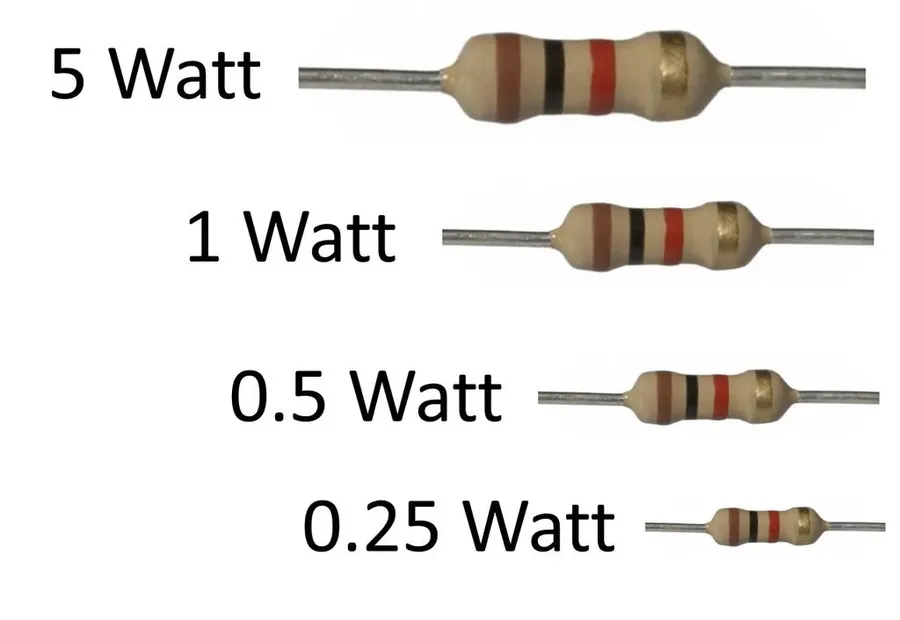
Selecting the correct resistor wattage is crucial for the reliable and safe operation of electronic circuits. It's not simply about matching the calculated power dissipation; it's about ensuring a significant safety margin to prevent overheating and potential component failure. This section focuses on practical strategies for choosing the appropriate wattage, considering both calculated values and environmental conditions.
The primary principle for selecting a resistor's wattage rating is to ensure it can handle the power it will dissipate during operation. This power dissipation is converted into heat, and exceeding the resistor's wattage rating will cause the resistor to overheat. This overheating can lead to several problems:
- Resistance Drift
Excessive heat can cause a change in the resistor's resistance value, altering the intended function of the circuit. - Premature Failure
Overheating can damage the resistor, leading to premature failure or complete burnout. - Component Damage
The heat from an overloaded resistor can damage nearby components on the printed circuit board. - Fire Hazard
In extreme cases, an overloaded resistor can become a fire hazard.
To avoid these issues, a safety margin is critical when selecting a resistor's wattage. Here’s how to select the correct wattage:
- Calculate Power Dissipation:
Use Ohm's Law and the power formula (P = I²R or P = V²/R) to calculate the power (in watts) that the resistor will dissipate. Be sure to use the maximum expected current or voltage values to represent worst-case scenarios. - Apply a Safety Margin:
Choose a resistor with a wattage rating significantly higher than the calculated power dissipation. A common practice is to select a resistor with at least twice the calculated wattage. For example, if a resistor is calculated to dissipate 0.25 watts, a 0.5 watt or 1 watt resistor would be suitable. This cushion helps accommodate any unforeseen fluctuations and maintains the resistor at a cooler operating temperature. - Consider Environmental Factors:
Ambient temperature plays a crucial role, especially for electronic devices operating in enclosed spaces or in high-temperature environments. Resistor power ratings are generally specified at 25°C (77°F). The maximum power the resistor can handle decreases with increasing ambient temperature. Refer to the resistor's datasheet to determine any temperature derating factors. Consider selecting a resistor with a higher wattage rating if the device is to be used in a hot environment. - Account for Transient Conditions:
During circuit operation, the resistor may experience brief periods of higher power dissipation. If these transients are expected to exceed the calculated values, use a resistor with a wattage rating that is adequate to handle the transient conditions.
Resistor Wattage and Physical Size
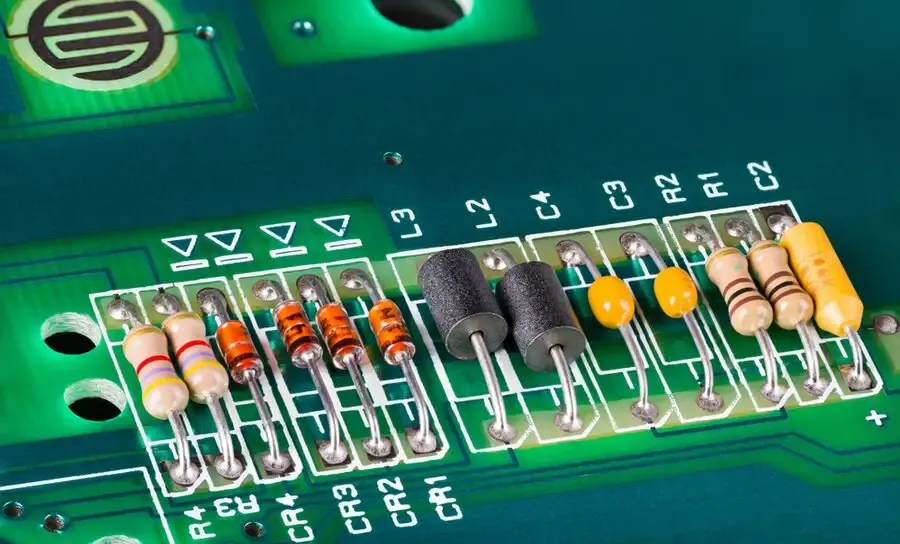
The physical dimensions of a resistor often provide an initial indication of its power handling capacity, with larger resistors generally capable of dissipating more heat. This correlation arises from the increased surface area available for heat dissipation. However, this relationship isn't absolute, particularly with the advent of surface mount devices (SMD) where advanced manufacturing enables higher power ratings in smaller packages.
| Resistor Type | Typical Size | Typical Wattage Range | Notes |
|---|---|---|---|
| Through-Hole (Axial) | Varies, larger for higher wattage | 1/8W to 5W+ | Easy to identify wattage by size |
| SMD (Surface Mount Device) | 0201, 0402, 0603, 0805, 1206, etc. | 1/20W to 1W+ | Size-to-wattage correlation less straightforward, refer to datasheet. |
While size can provide a rough estimate, relying solely on physical dimensions to determine a resistor's wattage can be misleading, particularly with SMD resistors where materials and construction play significant roles. For instance, a physically small SMD resistor might have a higher wattage rating than a larger through-hole resistor due to advanced heat dissipation techniques.
Therefore, it's crucial to consult the resistor's datasheet to determine the exact power rating. Datasheets provide precise details on the resistor's maximum power dissipation, temperature coefficients, and other critical specifications that influence its performance.
Resistor Wattage and PCB Design
In Printed Circuit Board (PCB) design, the power dissipation of resistors is a critical factor that demands careful consideration. Adequate spacing and effective heat sinking are essential, particularly for high-wattage resistors, to prevent overheating, which can lead to component failure and damage to the PCB substrate itself. Proper thermal management ensures the long-term reliability of the circuit and the integrity of the PCB.
- Spacing Considerations
Ensure adequate space between resistors, especially high-wattage ones, to facilitate air circulation and heat dissipation. Insufficient spacing can lead to localized hot spots, increasing the risk of component damage and performance degradation. - Heat Sinking Techniques
Implement appropriate heat sinking for high-power resistors. This can involve using thermal vias to transfer heat to other PCB layers or attaching dedicated heat sinks to the components. Good heat sinking prevents excessive temperature rise, maintains the resistor's integrity, and preserves its operational lifespan. - Component Placement Strategies
Position high-wattage resistors in areas of the PCB where airflow is maximized or heat dissipation can be managed effectively. Avoid placing them in close proximity to temperature-sensitive components, such as electrolytic capacitors, which can have their lifespans shortened or suffer damage due to excessive heat. - Package Selection
In high-power applications, utilizing larger package sizes for resistors allows for better heat dissipation, as these resistors typically have a larger surface area. This is in addition to considering a resistor with a higher wattage rating as the PCB design can also aid heat dissipation and improve circuit reliability.
Frequently Asked Questions About Resistor Wattage
Understanding resistor wattage is crucial for circuit reliability and safety. Here are some frequently asked questions to clarify common points of confusion.
- Why does resistor wattage matter?
Resistor wattage indicates the maximum power a resistor can safely dissipate as heat. Using a resistor with insufficient wattage leads to overheating, which can alter its resistance, cause it to fail, and potentially damage other circuit components. Therefore, selecting the correct wattage is as important as choosing the correct resistance value. - How do I choose the correct resistor wattage for my circuit?
First, calculate the power the resistor will dissipate using Ohm's Law and the power formulas (P = I²R or P = V²/R), where P is power in watts, I is current in amps, V is voltage in volts, and R is resistance in ohms. Use the maximum expected values for current and voltage. Then, select a resistor with a wattage rating significantly higher (typically twice or more) than this calculated power to ensure a safety margin. - What does a 5W rating on a resistor mean?
A 5W rating on a resistor signifies that it can safely dissipate 5 watts of power as heat without exceeding its operational limits or being damaged. It does not mean that the resistor will always dissipate 5 watts, but rather that this is its maximum safe operating limit. - How do I calculate the power dissipated by a resistor?
The power (P) dissipated by a resistor can be calculated using two primary formulas: P = I²R, where I is the current flowing through the resistor and R is its resistance, or P = V²/R, where V is the voltage across the resistor and R is its resistance. Choose the formula that uses the known values in your circuit. Both formulas give the same power calculation and result in watts. - Is there a relationship between a resistor's physical size and its wattage?
Generally, larger resistors can dissipate more heat and therefore handle higher wattage ratings. The physical size is often an indication of its power handling capacity, with surface mount devices being an exception to the rule due to advanced manufacturing techniques. For precise wattage information always refer to the datasheet of the component, and be aware that smaller SMD resistors can have a high power rating. - What happens if a resistor's wattage rating is exceeded?
Exceeding a resistor's wattage rating will cause the resistor to overheat. This can lead to changes in its resistance, which can affect the circuit's performance. Overheating may eventually lead to the resistor failing completely by burning out. In severe cases, it may cause damage to other components or pose a fire hazard. Always ensure the wattage is sufficient and ideally double the calculated need.
Practical Examples and Case Studies
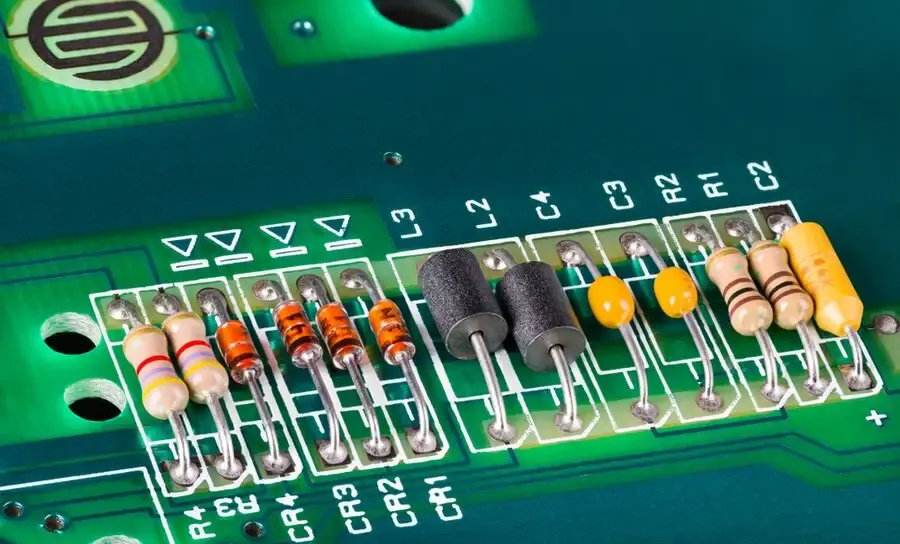
Understanding resistor wattage is crucial for practical applications. Examining real-world scenarios, such as LED lighting, motor control, and audio amplification, highlights the importance of accurate wattage selection in ensuring circuit reliability and longevity. These examples demonstrate the direct impact of theoretical concepts in applied contexts.
- LED Lighting Circuits
In LED circuits, resistors limit current to protect the LEDs. If a resistor with insufficient wattage is used, it will overheat, possibly causing failure or even fire. The specific wattage calculation is crucial for efficient and reliable LED performance. For example, if a resistor is expected to dissipate 0.25W, selecting at least a 0.5W or 1W resistor ensures a safety margin, particularly in enclosed fixtures. - Motor Driver Circuits
Motor driver circuits often handle significant currents, necessitating resistors with adequate power ratings. For instance, in a DC motor control circuit using a transistor and a current limiting resistor, the resistor must be sized appropriately to handle the voltage and current that are present. Failure to do so will result in component failure and circuit malfunction. - Amplifier Designs
In audio amplifiers, resistors are critical for setting gain, bias, and feedback. Incorrect wattage rating in a high-power audio amplifier can lead to premature component failure and signal distortion. For example, a power resistor used in an output stage might require a 5W or 10W rating to handle significant power dissipation, ensuring a stable and accurate audio signal. - Power Supply Circuits
Resistors are used to limit current and drop voltages in power supply circuits. Resistors with low wattage ratings in a power supply circuit are highly susceptible to burnout and potentially cause cascading failures in other components connected to the supply. Selecting an appropriately higher wattage is critical to ensure consistent and safe operation. - Heat Management Considerations
In all the above cases, it's crucial to consider ambient temperature and heat dissipation. High ambient temperatures can significantly affect a resistor's ability to dissipate power. Therefore, selecting higher wattage rated components or integrating heat sinks are essential design considerations to improve heat dissipation efficiency.
Choosing the correct resistor wattage is crucial for reliable and safe electronic circuits. Always calculate the power dissipation, choose resistors with higher wattage ratings than calculated needs, and consider physical size and environmental factors. By understanding resistor wattage, you can prevent circuit failures and ensure the optimal performance of your electronic projects. Remember, a correctly chosen resistor, whether it's 1/4W or 10W, is critical to the functionality of your electrical application.
 AnyPCBA
AnyPCBA